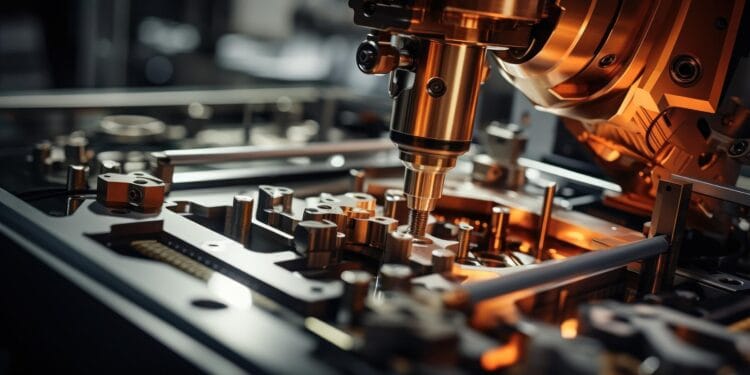In the ever-evolving world of manufacturing, 5-axis CNC (Computer Numerical Control) machining stands out as a game-changer. Known for its ability to produce complex parts with exceptional precision, 5-axis CNC machining has seen remarkable advancements in recent years. These improvements not only enhance the quality of manufactured components but also boost efficiency, reduce production times, and open new possibilities for industries ranging from aerospace to medical devices.
Understanding 5-Axis CNC Machining
Before diving into the advancements, it’s essential to understand what makes 5-axis CNC machining unique. Unlike traditional 3-axis machines that move a cutting tool along the X, Y, and Z axes, 5-axis machines add two additional rotational axes. This allows the tool to approach the workpiece from virtually any angle, providing unparalleled flexibility and precision.
Benefits of 5-Axis Machining:
Complex Geometries: Capable of creating intricate shapes that are impossible with 3-axis machines.
- Improved Surface Finish: Reduces the need for secondary operations.
- Shorter Tool Paths: Decreases machining time and tool wear.
Recent Advancements in 5-Axis CNC Machining
1. Enhanced Machine Dynamics
Modern 5-axis machines are equipped with advanced servo motors, high-speed spindles, and improved linear motors. These upgrades result in faster movements, higher acceleration, and better responsiveness, which are crucial for high-precision tasks.
2. Advanced Software Integration
The integration of sophisticated CAM (Computer-Aided Manufacturing) software has revolutionized 5-axis machining. These software solutions now feature:
- Real-Time Simulation: Allowing engineers to visualize tool paths and detect potential collisions before actual machining.
- Adaptive Machining: Automatically adjusts cutting parameters based on material properties and tool conditions.
3. Smart Automation and IoT Connectivity
The rise of Industry 4.0 has introduced smart automation into CNC machining. Modern 5-axis machines can now be connected to the Internet of Things (IoT), enabling:
- Predictive Maintenance: Monitoring machine health to prevent unexpected breakdowns.
- Remote Monitoring: Operators can oversee operations from anywhere, improving efficiency and reducing downtime.
4. Improved Tooling and Materials
Advancements in cutting tool technology and materials have significantly enhanced performance:
- High-Performance Tool Coatings: Increase tool lifespan and reduce friction.
- Multi-Functional Tools: Allow for multiple operations in a single setup, minimizing tool changes and reducing cycle times.
5. Additive and Subtractive Hybrid Machining
Some of the latest machines combine additive manufacturing (3D printing) with traditional subtractive machining. This hybrid approach allows for the creation of complex geometries with internal structures, which are ideal for aerospace and medical implants.
- Applications of Advanced 5-Axis Machining
Aerospace: Manufacturing turbine blades, complex engine components, and lightweight structures. - Medical Devices: Producing custom implants and surgical instruments with high precision.
- Automotive: Crafting intricate prototypes and high-performance parts.
- Mold Making: Creating detailed molds with complex geometries.
The Future of 5-Axis CNC Machining
As technology continues to advance, the future of 5-axis CNC machining looks promising:
- Artificial Intelligence (AI) Integration: AI will optimize machining processes, predict failures, and enhance decision-making.
- Greater Energy Efficiency: Eco-friendly designs and energy-saving technologies will become standard.
- More Accessible Automation: Smaller manufacturers will benefit from affordable automation solutions.
Conclusion
The advancements in 5-axis CNC machining have redefined what’s possible in the manufacturing world. With enhanced precision, efficiency, and flexibility, this technology continues to push the boundaries of innovation across industries. As we look ahead, the fusion of AI, IoT, and hybrid manufacturing will undoubtedly lead to even more transformative changes.


































Discussion about this post